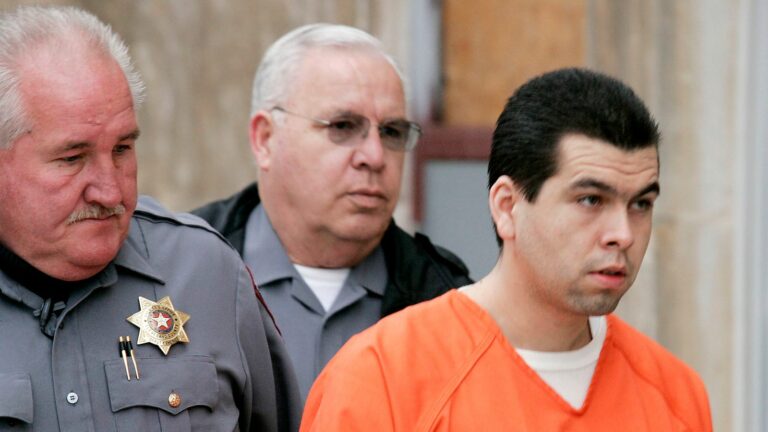Man Executed in the US for Rape and Murder of Dance Student
In a tragic and controversial case, a man named Anthony Sanchez, aged 44, has been executed in the United States. He was executed for the rape and murder of a dance student, Juli Busken, a crime that remained unsolved for years until DNA evidence from the crime scene was matched to him while he was serving time in prison for burglary.
Sanchez strongly protested his innocence as he was prepared for execution in the Oklahoma State Penitentiary in McAlester. He was declared dead just 11 minutes after the lethal drugs began to take effect.
Despite his claims of innocence, Sanchez made the unusual choice not to apply for clemency, which many saw as his last chance to avoid execution. Before his execution, he criticized his former lawyers and expressed gratitude to his supporters, including his spiritual adviser who was present in the chamber with him. Sanchez repeatedly asserted his innocence, stating, “I’m innocent. I didn’t kill anybody.”
Shortly before the execution, the US Supreme Court rejected a request to delay the execution from Sanchez’s new lawyer, who had argued for more time to review the case evidence.
Tragic Background
Juli Busken, a 21-year-old dance student who had just completed her studies at the University of Oklahoma, was abducted on December 20, 1996, from the parking lot of her apartment complex. Her lifeless body was later discovered near a lake on the outskirts of Oklahoma City. She had been bound, raped, and fatally shot.
Ms. Busken had a promising future as a ballerina and even had a scholarship established in her name at the College of Fine Arts due to her performances during her time at the university.
Sanchez was initially serving a sentence for burglary when DNA evidence from the victim’s clothing was matched to him, leading to his conviction and subsequent death sentence in 2006.
Maintaining Innocence
Sanchez consistently maintained his innocence, claiming that the DNA evidence was fabricated and false. He declined to seek clemency, citing skepticism about the likelihood of receiving it, even when recommended by the pardon and parole board.
State attorney general Gentner Drummond, however, asserted that the DNA evidence unequivocally linked Sanchez to the murder, with odds of randomly selecting an individual with the same genetic profile at one in 94 trillion.
Controversy Surrounding the Case
While a private investigator hired by an anti-death penalty group argued that the DNA evidence might have been contaminated, former Cleveland county district attorney Tim Kuykendall, who was the lead prosecutor during Sanchez’s trial, emphasized that there was other evidence linking him to the crime, including ballistic evidence and a shoe print found at the scene. Kuykendall stated, “I know from spending a lot of time on that case, there is not one piece of evidence that pointed to anyone other than Anthony Sanchez.”
Sanchez’s execution marks the third in Oklahoma this year and the tenth since the state resumed the death penalty in 2021, ending a six-year moratorium due to concerns about execution methods.

